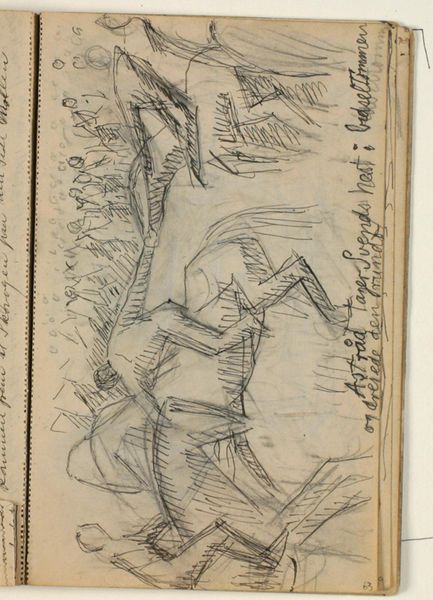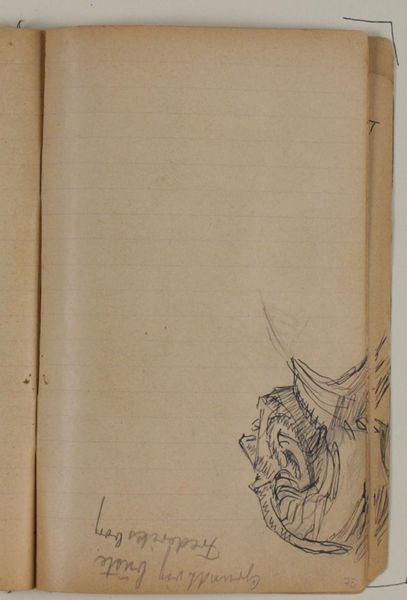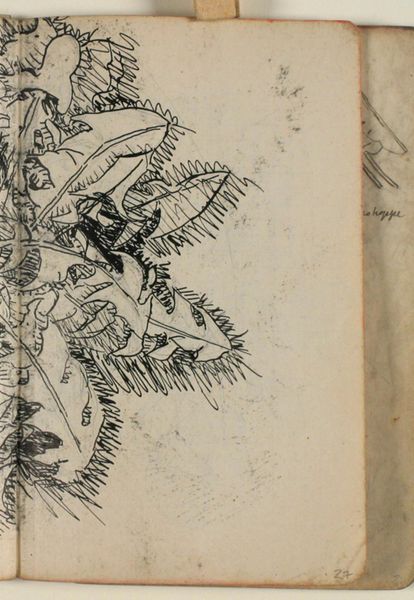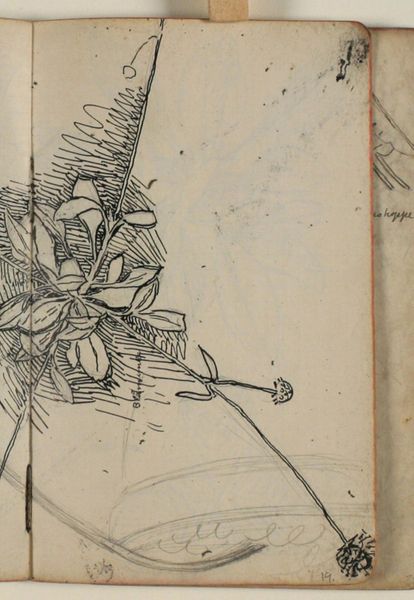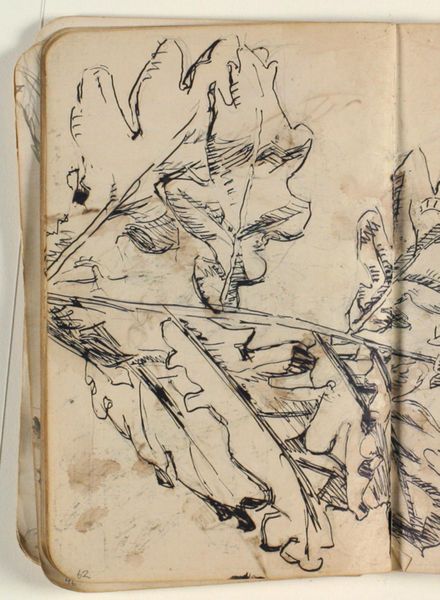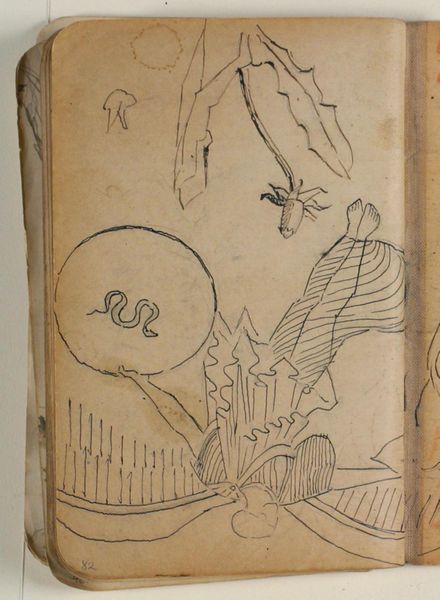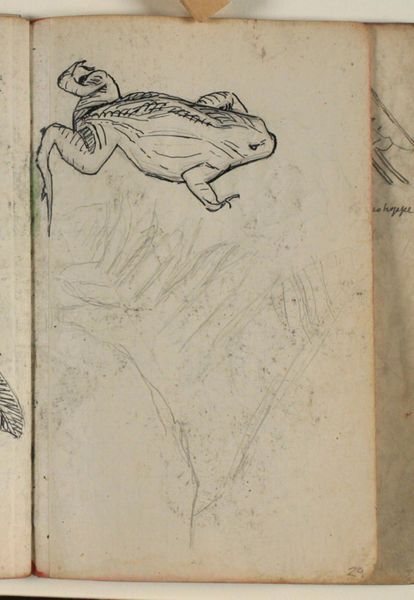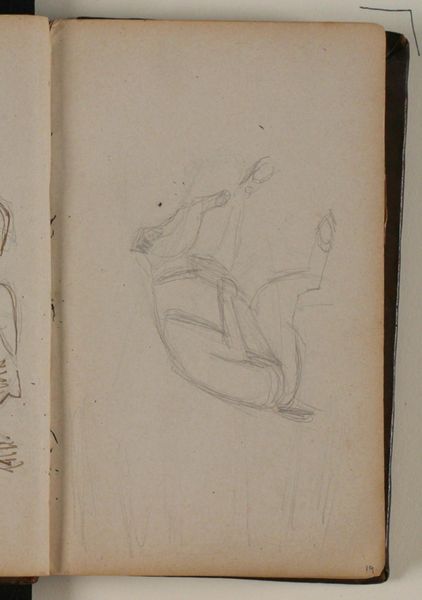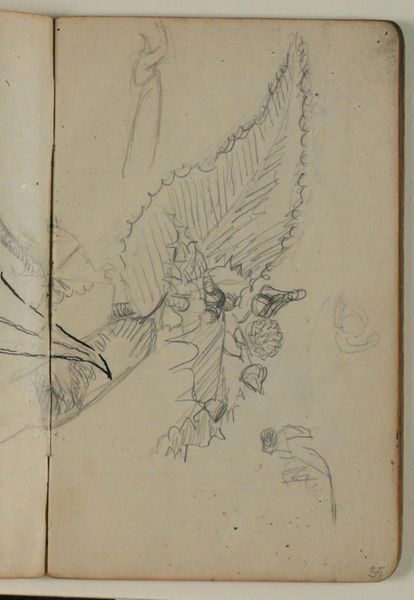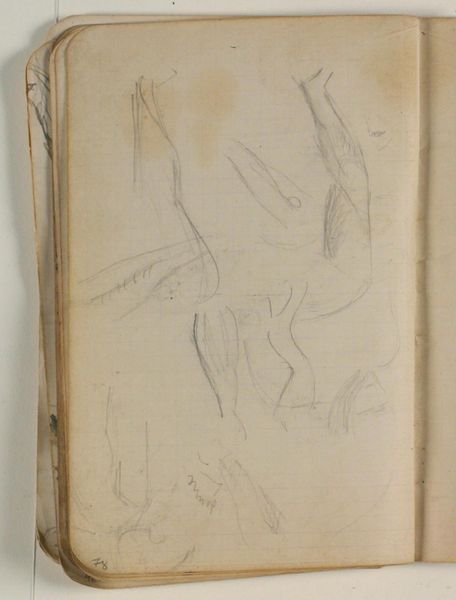
Plantestudier og studie af hånd, med farveangivelser 1906 - 1910
0:00
0:00
Dimensions: 161 mm (height) x 96 mm (width) (bladmaal)
Editor: So, this is "Plant Studies and Study of a Hand, with Color Indications" by Niels Larsen Stevns, from 1906 to 1910. It's ink and colored pencil on paper. It feels almost like a private glimpse into the artist's notebook. What strikes you about it? Curator: The immediacy. I’m interested in the physical act of creation here. Consider the quickness of the line, the apparent haste in capturing these botanical forms and the hand. This isn’t just observation; it's about Stevns wrestling with the material reality of translating the world onto paper. Do you see how the colour notations hint at an intention, perhaps a struggle to fix fleeting perceptions? Editor: Yes, I noticed the color indications! It's like he's planning a larger work, maybe a painting, and this is him mapping it out. Is this a common process for artists of this period? Curator: Absolutely. But think about it more materially. Why choose colored pencil and ink? How does the absorbency of the paper impact the line? This choice reflects accessibility, cost-effectiveness and portability of the medium, differentiating it from painting with oil or watercolour on stretched canvas which is typically considered 'fine art.' What implications might that have? Editor: Hmmm… maybe he valued process over a finished, polished product? It's like the labor, the very act of sketching, is the art itself? Curator: Precisely! It disrupts that traditional hierarchy between 'finished' artwork and preparatory sketch, doesn’t it? Furthermore, think about the notebook format, suggestive of daily labor and study, mass production versus studio practices… it transforms the preciousness that is typically linked with high art. Editor: That’s a really different way of looking at it. I usually focus on composition and symbolism. Curator: And those elements are important! But considering the materiality brings a socio-economic dimension that enriches our understanding of the artwork. Editor: I never thought about how the materials themselves could be such an important statement. It gives me a new perspective to consider in my future studies! Curator: Exactly. Seeing the means of production transforms our view of art.
Comments
No comments
Be the first to comment and join the conversation on the ultimate creative platform.
